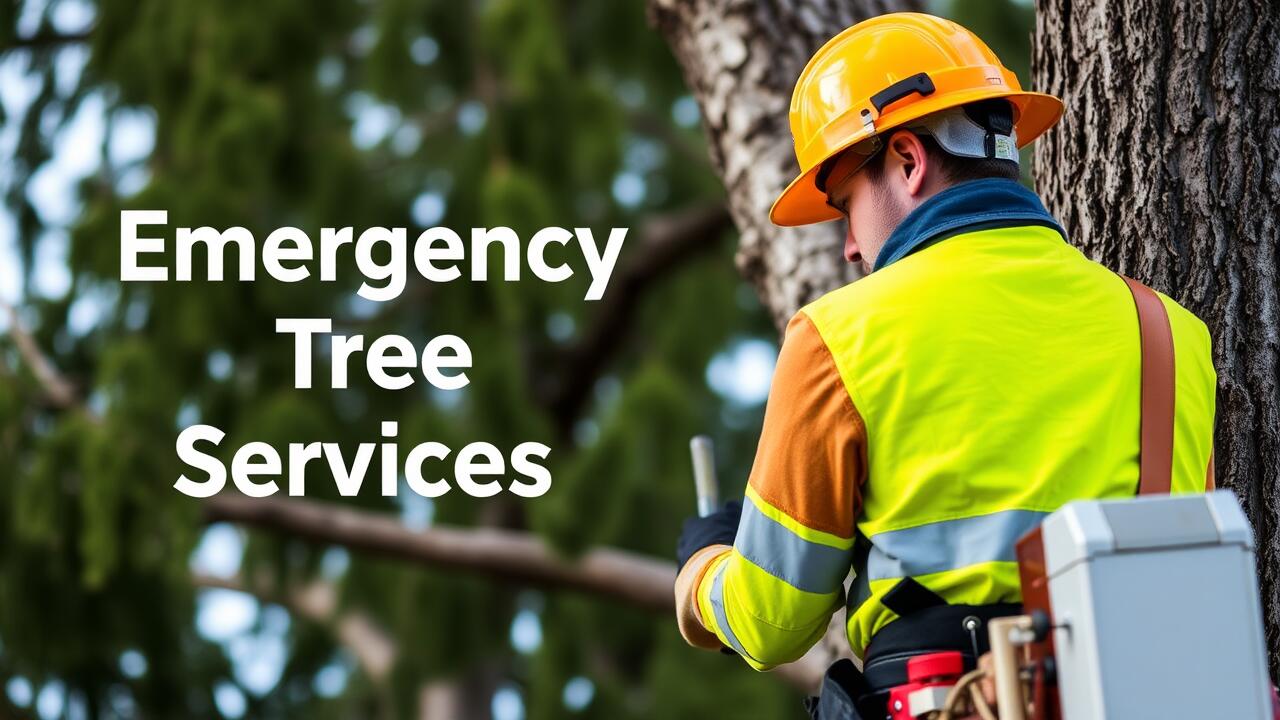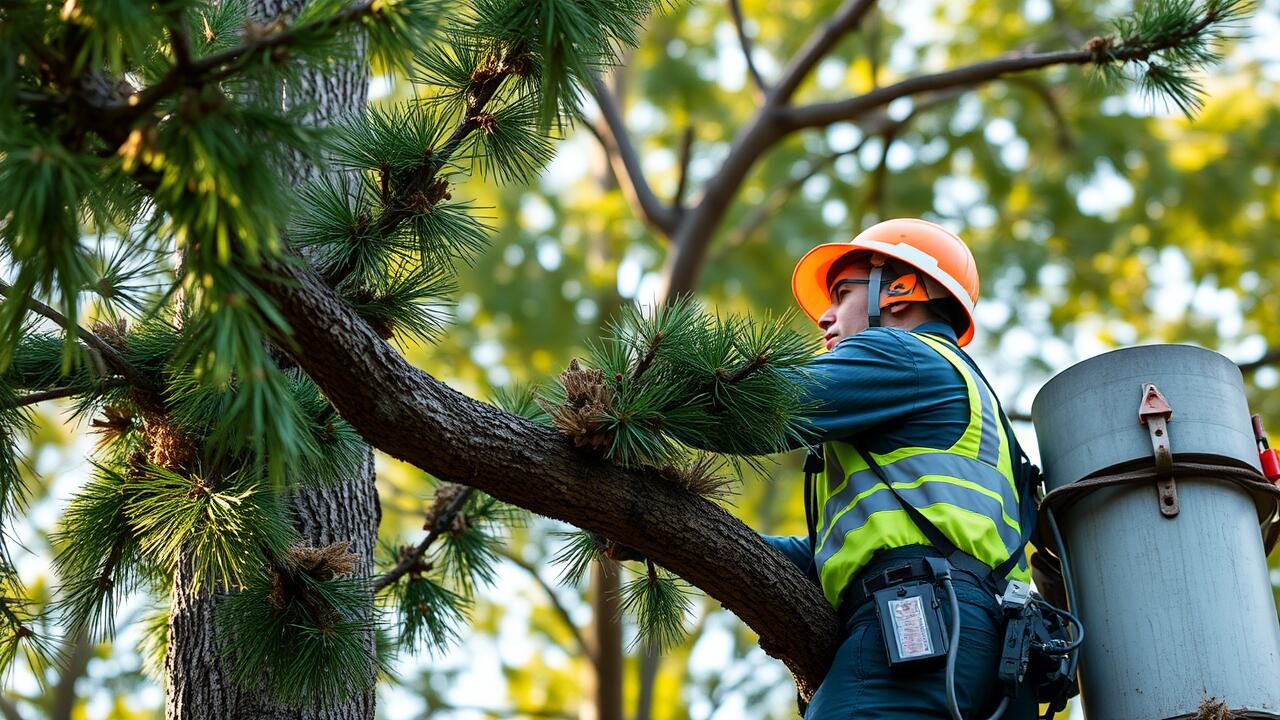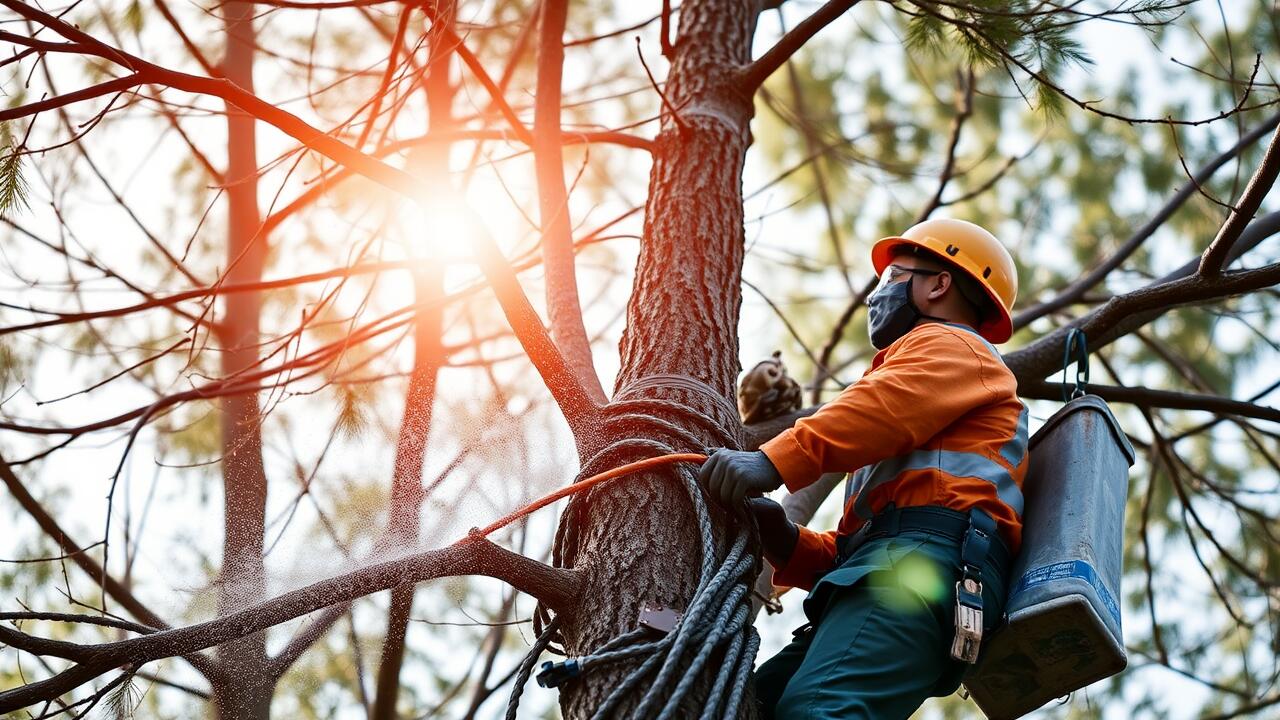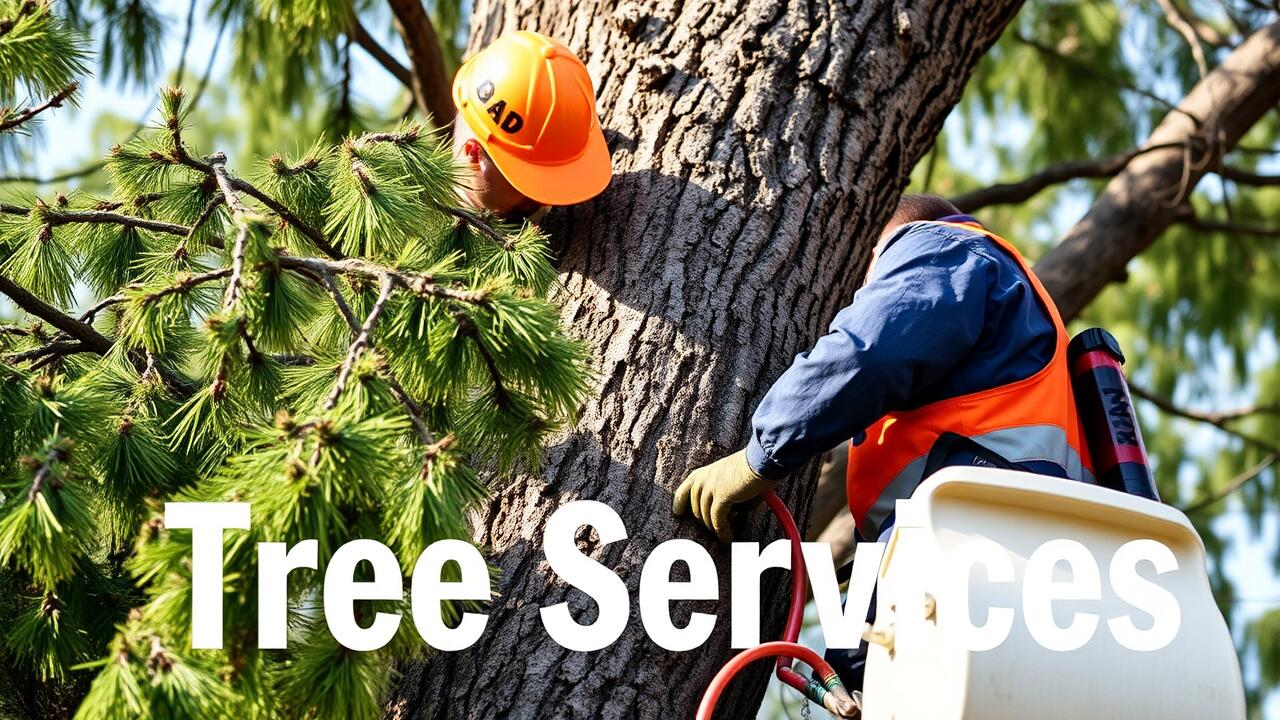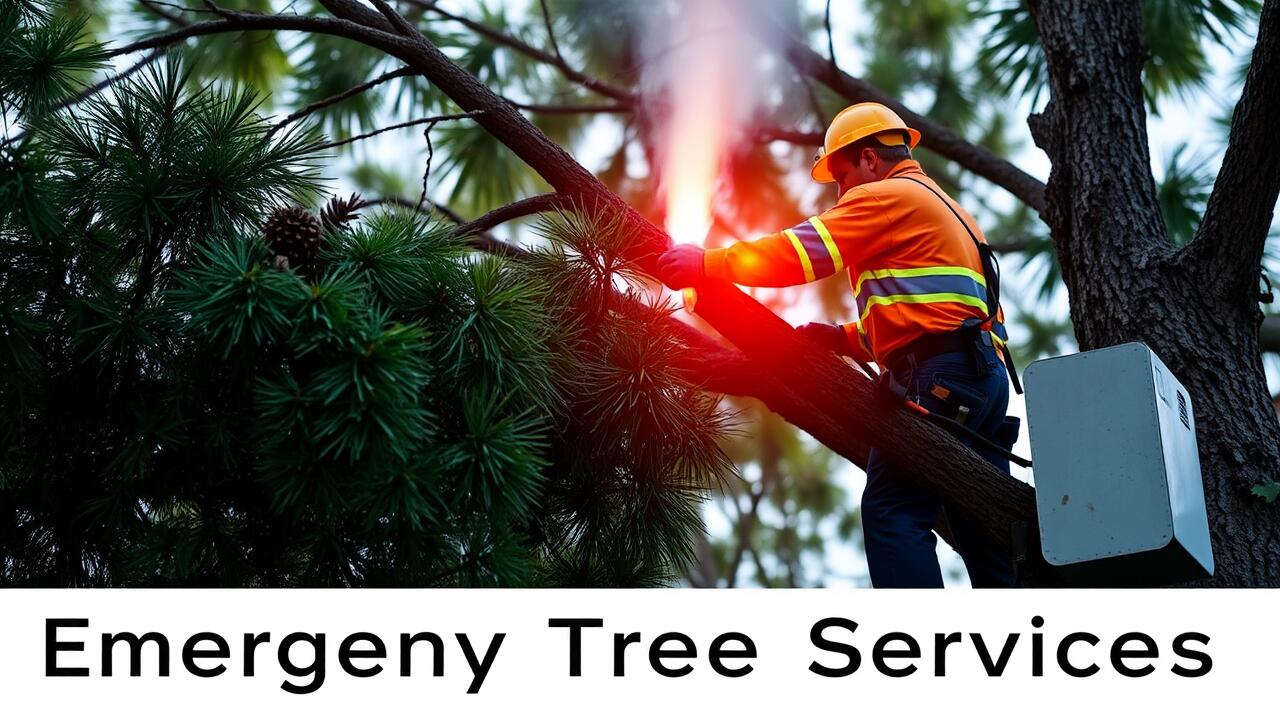
Emergency Cleanup Strategies
After a storm, timely and effective cleanup is crucial for restoring safety and aesthetics to communities. Assessing the situation should be the first step. Identify any downed branches or uprooted trees that pose risks to people and property. Prioritize removal tasks based on danger levels. Engaging professionals for hazardous removals can help prevent accidents. Residents can search for "Emergency Tree Services near me" to find reliable teams equipped to manage storm-damaged trees.
In addition to hazardous tree removal, clearing storm debris from roadways and sidewalks enhances public safety. Use of heavy equipment may be necessary for larger debris. Smaller debris can be handled with manual methods, such as chainsaws and pruning tools. Establishing a systematic approach can streamline this process, allowing for quicker response times. Engaging with local volunteers can provide additional manpower during cleanup efforts, fostering a sense of community while ensuring efficient recovery.
Equipment and Techniques for Safe Removal
When dealing with storm-damaged trees, safety should always be the top priority. Proper equipment is essential for effective and secure removal. Chainsaws, ropes, and safety harnesses are commonly used tools that help ensure precise cuts and stability when handling large branches or entire trees. It is crucial to wear personal protective equipment, such as helmets, gloves, and eye protection, to guard against falling debris. Assessing the tree’s condition before attempting removal can prevent further injury or damage.
In many cases, hiring professionals for emergency tree removal can be the safest option. Companies offering "Emergency Tree Services near me" are equipped with specialized machinery, including bucket trucks and chippers. These services ensure that removals are completed quickly while minimizing the risk to both the workers and property. Trained arborists can also provide guidance on whether a tree can be saved or should be removed completely, helping to maintain the overall health of the landscape in the aftermath of a storm.
Replanting After a Storm
After a storm, replanting efforts play a crucial role in restoring the landscape and supporting local ecosystems. Selecting the right trees for recovery is essential. Consider native species that are well-adapted to the local climate and soil conditions. These trees often require less maintenance and can provide habitat for wildlife. Researching various tree options can help individuals make informed choices that contribute positively to the environment.
Local communities can benefit from resources such as "Emergency Tree Services near me" to aid in the replanting process. These services can offer expertise in tree selection and planting techniques. Many organizations also provide assistance with soil preparation and care for newly planted trees. Engaging with local support networks can facilitate a successful recovery effort while fostering a sense of community.
Choosing the Right Trees for Recovery
Selecting the right trees for recovery involves understanding the local ecosystem and choosing species that are resilient in storm-prone areas. Native trees often adapt better to the local climate and soil conditions, providing a more stable environment for growth. Species such as oak, maple, and pine are frequently recommended for their strength and longevity. It's essential to consider factors like growth rate, maintenance needs, and potential size at maturity when making choices for replanting.
Consulting with experts from “Emergency Tree Services near me” can provide valuable insight into which trees will thrive in your specific area. Professionals can assess soil conditions and recommend varieties that will not only survive but also enhance the beauty and functionality of your landscape. Prioritizing diversity in tree selection can mitigate risks associated with future storms and promote a healthier environment in the long run.
Community Resources for Storm Response
Local communities often organize resources to assist residents in the aftermath of a storm. Numerous organizations provide support for tree removal, debris cleanup, and emergency repairs. Connecting with neighborhood groups and municipality services can prove invaluable for those impacted by storm damage. Online platforms often list "Emergency Tree Services near me," ensuring residents can access professional help quickly.
In addition to immediate cleanup, many regions offer long-term support through local nonprofits and community initiatives focused on replanting efforts. These organizations typically host workshops and provide guidance on selecting appropriate tree species that will thrive in the area. By engaging with local experts, homeowners can contribute to a healthier landscape and foster resilience against future storms.
Local Organizations and Support Networks
Local organizations play a crucial role in storm response, particularly in providing resources and support for communities affected by severe weather. Many local nonprofits and community groups mobilize quickly after a storm to assess damage and coordinate cleanup efforts. Volunteers often come together to offer their expertise, whether that means helping with debris removal or providing emotional support for those impacted. These groups typically maintain connections with local government agencies, ensuring streamlined communication and effective resource distribution.
In many areas, residents can access a variety of services to assist with storm recovery. Resources like "Emergency Tree Services near me" can be found through local directories or community websites. These services are essential for safe and efficient tree removal and management following severe storms. Engaging with community organizations not only fosters a sense of solidarity among residents but also ensures that recovery efforts are organized and impactful.
FAQS
What should I do immediately after a storm if trees are down in my yard?
First, ensure your safety by avoiding any downed power lines and unstable trees. If it's safe, assess the damage and document it. Contact local emergency services if there are hazardous situations. For minor debris, you can begin cleanup with proper equipment, but for large or dangerous trees, it's best to call professional tree removal services.
How can I safely remove a fallen tree from my property?
Use the appropriate equipment such as chainsaws, axes, and safety gear. If you're not experienced in tree removal, it’s advisable to hire professionals to avoid injury or further damage. Always assess the tree for potential hazards, such as nearby power lines.
What are some suitable trees to plant after a storm?
Consider native species that are well-adapted to your local climate and soil conditions. Fast-growing trees like red maple, sweetgum, and oak can provide quick shade, while evergreens like pine and spruce offer year-round greenery. Consult with a local nursery for recommendations specific to your area.
Are there community resources available for storm response and tree recovery?
Yes, many local organizations, municipalities, and volunteer groups assist with storm recovery efforts. These may include tree removal services, replanting initiatives, and educational workshops. Check your local government website or community bulletin boards for resources in your area.
How long does it typically take for trees to recover after a storm?
Recovery time for trees can vary significantly based on the extent of the damage and species. Minor damage may see recovery within a few months, while severely damaged trees may take years to fully recover or may not survive. Regular care, such as pruning and watering, can help support their recovery.
